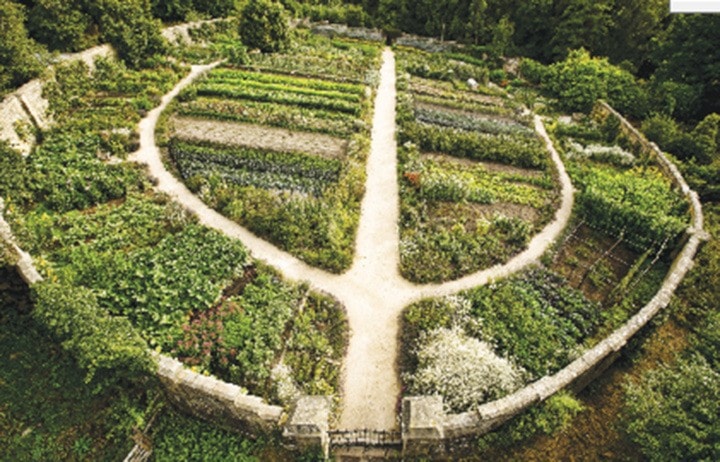What is it about being embraced? Held? Not solely by a loved one, but a garden?
Enclosed gardens have a history almost as old agriculture itself. What may have begun as a practical consideration – to keep animals out and plants in – has evolved into spaces designed for pleasure. Think of the courtyard gardens of the ancient world, the delicacy of Japanese roji wrapping around a building, the urban oases of modern life.
As Julie Moir Messervy writes in The Inward Garden, “a cloister, court, plaza or square are the architectural equivalents of the wing chair, booth, playpen, or fenced-in yard that formed the harbours of our childhood landscapes.”
Winter is a great time to examine the structure of your garden. In areas unused, can you work vertically to enclose a space and make it more inviting? Or can you divide a space using a panel, pergola, arbor or a wall?
For very little money it’s possible to sink two T-posts into the ground, wire on a panel of cedar trellis and plant seeds of an easy annual vine like Cobea scandens, the old fashioned Cup and Saucer vine, which can easily cover twenty-feet in one season.
Step up that set-up to a permanent post set in concrete or a saddle and pier block combination and perennial vines and roses will delight in covering it over the years. (You might even plant tender annuals like cucumbers or trailing nasturtiums (which climb with a modicum of assistance) to give you first-year interest while your roses fill in.
Somehow I’ve managed to talk about vertical gardening when what I really wanted to natter on about was the history of walled gardens – grand in scale no doubt, but some lessons for the home gardener apply.
I recently visited a walled garden at Gravetye Manor in Sussex, England, where two and half acres still produce produce for the manor’s restaurant. The garden is a fantastic example of all that once was and can still be grown: apples espaliered, tall Jerusalem artichokes, purple Brussels sprouts, hedges of kales, tidy rows of salad greens, herbs and edible flowers edging paths.
Gravetye’s walled garden was established in 1901 at the end of an era for these great gardens (in the UK most were built between 1750 and 1880). The decline in skilled labour during Great War and the development of refrigeration afterwards changed how food was produced and consumed and many gardens fell into disrepair. Restoration of Gravetye’s walled garden began in 2010. Head gardener Tom Coward manages the walled garden for productivity using Victorian cultivation techniques.
But back to our enclosures: As you move up the expense ladder the benefits of enclosure increase. Rock and brick store radiant heat. Plus, walled gardens block wind thus raising the temperature inside. Interesting fact: a one-acre kitchen garden could produce food for 12 people in Victorian times. Do the math and technically I could be growing food for a family of four on my large urban lot. (Yet another argument for smaller house footprints…). I do consider my own garden a bit of a playpen and delight in growing tall plants to create small private spaces.
Humans have long loved a proximity to – nay, an intimacy with nature, but we seem to love it best on our own terms; a little controlled chaos close to home. And speaking of chaos, one last European digression. On my flight over I happened upon a historical drama I hadn’t seen, directed by a man that I will miss forevermore: Alan Rickman. It wasn’t a great movie, but the title is: A Little Chaos. And the musical composition of the same name (by Scottish cellist Peter Gregson) evokes precisely the grandeur and intimacy of the garden featured in the final scene. It’s known as the Bosquet de la Salle-de-Bal at Versailles and over the course of the movie we witness its construction. In that last scene of the film, Rickman – majestic as Louis XIV, enters the sunken garden for the first time. People dance around him while he stays still, a centrepoint of glory and magnificence.
Messervy says it best: ‘enclosures…give us the security to perceive ourselves as the weighted center of any landscape…by feeling enclosed, we feel as though we are the center of the world.”
Christin Geall is an avid Oak Bay gardener and creative non-fiction writing instructor at the University of Victoria. She writes here twice a month on all things gardening.
